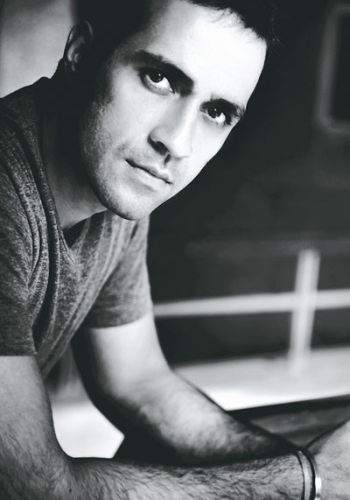A Serious Man
The last time I met Aatish Taseer – a little over three years ago – was for his then new book, Noon. (Read it here) This time around, it is for his next new book, The Way Things Were. Much remains the same – the reasons for our meeting, the tenor of our conversation, the intertwining of the personal and the literary in his book and our chat. And the author’s gaze is as intense as I remembered it.
But much has changed in the country in the intervening years. The general elections of 2014 have altered the nation’s mood irrevocably and India stands, somewhat nervously, at an inflection point. Taseer, ever the political being – “I have this stuff in my bone marrow” – picks up this mood and sets his story against a backdrop that moves from the rise of the Hindu Right in the aftermath of Operation Blue Star in 1984 and further back to the Emergency in 1975. The Way Things Were is his most political work of fiction yet.
“Politics has been my main mode of being for as long as I can remember. My father (the late Pakistani politician Salman Taseer) was in politics, my mother (Tavleen Singh) is a political journalist; politics is all I heard while growing up,” he explains. “You know the kids in Mumbai’s filmi world, who grow up in the film industry and know all about trade figures – I was like that, but with politics.”
The three landmark political events that he picks directly impact the lives of the book’s main characters – the fiery Uma “who has a talent for life”; her first husband Toby, a Sanskrit scholar and genteelly impoverished royal; her second husband Maniraja, a rough-edged businessman with an inclination towards the Hindu Right; and Uma’s son Skanda, also a Sanskrit scholar, trying to make sense of it all. (The love of Sanskrit, both the author’s and the characters’, permeates this book; more on that later.)
Clearly, Uma is the star of this show. She is wilful, adventurous and what people like to call a “strong woman”. The kind he’s grown up around, says Taseer. There’s his mother, of course, “a tough, ballsy woman.” He adds BJP politician Vasundhara Raje and author Gita Mehta to the list (you’ll also find intriguing shades of these women in some of the characters in the book). They are representative of a generation of women who grew up in a different time and for whom he has a deep admiration. “I was struck by the stylishness of that kind of Indian woman,” he says. “They were very glamorous; they were not imitations of women in Europe or America. They were very much their own women; the feminism of that period had touched them. Many found that their dream of a husband and children had not worked out and yet they ploughed their way through life.” (For those who don’t know, Tavleen Singh brought up Aatish on her own, with Salman distancing himself from the mother and son.)
“They…” He pauses. “Wait, let me find it in the book for you.” And reads: ‘These women, who, drunk and angry and bitter about life, could nonetheless, from the depths of some quieter India, where afternoons were longer, and reading deeper, could throw a little Henry James your way on a cold December night as easily as someone passing over a bowl of peanuts.’
Uma is the kind of woman you’d be hard put to find now, says her creator. To illustrate, he offers an anecdote from New York some years ago at a “fashion-type event showing the autumn collection or something.” The setting is fuzzy but the memory of his horror is sharp. “There was a party thrown by Diane von Fürstenberg (the American designer famed for her iconic wrap dress) at which there were two Indian women, one from Mumbai and one from Delhi (you probably know them both). And they were dressed identically, almost as if they were mirror images of each other. And guess what they were wearing?” A rhetorical pause. “Leopard skin cocktail dresses.” Pause. “Amongst some of the most glamorous people in the world. And these two women are apparently style icons in India.”
Why not the sari, he wonders. “Not all forms of our traditional clothing work everywhere. The salwar kurta, for example, doesn’t travel; it doesn’t work in London or New York,” he admits. “But a sari is one of the few forms of Indian dress that you can wear with high heels. I’m not in the fashion business but I honestly don’t know how you can improve on a sari.”
The derivative, imitative style that so offended him is but a reflection of a deeper Indian malaise, he believes. “Modern India doesn’t feel like a place that has found its voice yet. And when that happens it shows up in big and small ways. It shows up in the quality of writers and it also shows up in women’s clothing, because culture is a part of your confidence, a part of your sense of who you are.”
Identity is a recurring theme in Taseer’s books – not surprisingly. Setting out to learn Sanskrit some eight years ago was perhaps a related quest. The idea of a young man who once partied with the swish set in London (when he was in a relationship with Lady Gabriella Windsor, a member of the British Royal family), burying himself in Sanskrit’s notoriously difficult grammar would seem rather unlikely. But it’s a passion that’s stayed, and seeped into his book. Two of the three key male characters – Toby and his son Skanda – are besotted with Sanskrit and amuse themselves with an academic game of cognates (a linguistic term for words in different languages that are linked by a common root). There is even a two-page love scene built around the cognates for nakta (Sanskrit for night).
That was one amusing scene, I tell the author. “It was fun, no?” he grins, eyes lighting up. “Did you like the ‘Shashi’ mention?” he asks eagerly, referring to another passage about the origin of my name, and is visibly pleased when I say yes. Such an academic, professorial pursuit, I think, for an author in his 30s, who talks easily of fashion and glamour, whose social connections, celebrity status and good looks, you imagine, could have him easily on the party circuit.
“People say, ‘Oh, if you don’t go out in your 20s, when will you?’ he smiles. “But also, if you don’t learn Sanskrit in your 20s you can’t learn it in your 40s! People pick and choose what they want to do with the energy of youth, you know.”
This reminds me that when we talked last, he insisted that he led a rather austere, literary life. He had mentioned that he was up by 5 am, in bed most days by 9.30 pm, with lots of reading and writing in between. He didn’t have the time, mind space or money to go clubbing or partying, he had said. Is life still the same?
“I’m a fully formed human being, you know; this is my life,” he laughs. “But when you have a book going on, you withdraw. And you know, I don’t want to go clubbing. I’m not pretending to be a serious guy; I am a serious guy!”
As we both burst into some serious laughter, he concedes, “But I’ve been in the world much more in the last few years because of my journalism, my TV show, The Gentleman’s Code, which aired in 2014 early on Star World, and because I was abroad. And when you have a new book, like now, you have a little money and you’re much more in the world.”
Good thing I’ve caught him with his new book, I think. Now to wait for the next.
Related posts from Verve:
Verve Trending
Sorry. No data so far.
us on Facebook to stay updated with the latest trends







